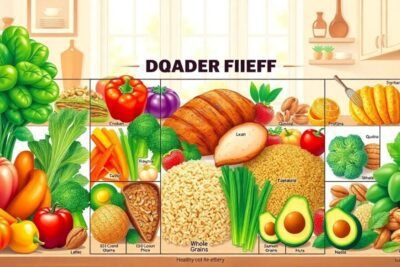
How to stop low blood pressure fast
Low blood pressure, also known as hypotension, can sometimes lead to uncomfortable symptoms and health risks if not properly managed. Understanding its causes and treatment options is essential for those who experience it. In this article, we will explore effective ways to manage low blood pressure, focusing on how to stop low blood pressure fast.
How to treat low blood pressure?
Treating low blood pressure effectively often starts with identifying the underlying causes. Medical evaluation is crucial, as it can help guide the treatment plan. For those with mild symptoms, lifestyle changes may be sufficient. Increasing your fluid intake and consuming more salt can help raise blood pressure levels naturally.
Additionally, you may want to consider wearing compression stockings. These can help improve blood circulation, thus alleviating symptoms associated with low blood pressure. In some cases, medications like fludrocortisone may be prescribed by a healthcare professional to help manage blood pressure levels effectively.
- Increased fluid intake.
- Higher salt consumption.
- Compression stockings.
- Medication if necessary.
It’s important to monitor your blood pressure regularly, especially if you have a history of hypotension. Keeping track of your measurements can alert you to any significant changes that may require further attention.
What are the symptoms of low blood pressure?
Low blood pressure can manifest in various symptoms, some of which may be mild while others can be more severe. Common symptoms include:
- Dizziness or lightheadedness.
- Fainting.
- Fatigue.
- Nausea.
Many individuals may not experience any symptoms until their blood pressure falls to a significantly low level. If you notice persistent or severe symptoms, it is essential to seek medical advice to rule out any serious underlying conditions.
Strong fluctuations in blood pressure can lead to complications, particularly if they result in fainting or falls. Being aware of your body's signals is key to managing your health effectively.
What causes low blood pressure?
Several factors can contribute to low blood pressure. Understanding these causes can help in effectively managing the condition. Some common causes include:
- Dehydration: This can occur due to not drinking enough fluids or losing too much fluid through vomiting, diarrhea, or sweating.
- Heart problems: Some heart conditions can lead to low blood pressure by affecting the heart's ability to pump blood effectively.
- Endocrine issues: Hormonal imbalances, such as those caused by adrenal insufficiency or thyroid disorders, can affect blood pressure.
- Severe infection (septicemia): This can lead to a drastic drop in blood pressure, known as septic shock.
Understanding the underlying causes of hypotension is crucial. Consulting with healthcare professionals can help identify these factors and guide you toward effective treatment options.
How to raise blood pressure immediately at home?
If you find yourself needing to raise your blood pressure quickly, there are several home remedies you can try. Here are some practical tips:
1. Increase your salt intake: Salt can help raise blood pressure, but consult with your doctor if you have dietary restrictions.
2. Stay hydrated: Drinking water or an electrolyte-rich drink can be very effective.
3. Eat small, frequent meals: Large meals can sometimes cause a drop in blood pressure. Eating smaller portions can help maintain stable levels.
4. Avoid alcohol: Alcohol can lower blood pressure more significantly, so it's best to limit its intake, especially in a low blood pressure situation.
Implementing these strategies can help you address low blood pressure symptoms effectively and quickly.
How to manage fainting associated with low BP?
Fainting can be a serious concern for those with low blood pressure. Here are some effective management techniques:
- Lie down immediately: If you feel faint, lying down can help improve blood flow to the brain.
- Elevate your legs: Raising your legs can also help increase blood circulation to vital areas.
- Stay calm: Reducing anxiety can help maintain stable blood pressure levels.
Additionally, recognizing the warning signs of fainting, such as dizziness or blurred vision, can help you take preventive measures before a fainting episode occurs.
What should you eat when BP is low?
Diet plays a crucial role in managing low blood pressure. Here are some nutritional tips for low blood pressure sufferers:
- Salted foods: Incorporate saltier snacks like pretzels or salted nuts to help raise blood pressure.
- Hydrating foods: Foods with high water content, such as cucumbers and watermelon, can help maintain hydration.
- Foods high in vitamin B12: These can help with blood production and include eggs, dairy, and fortified cereals.
- Iron-rich foods: Include spinach, red meat, and legumes to help maintain healthy blood levels.
Understanding what to include in your diet is essential for managing hypotension. Always consult with a healthcare provider for personalized advice.
How do you fix low blood pressure asap?
To fix low blood pressure quickly, start by increasing your fluid intake and consuming salty foods. Drinking water or an electrolyte beverage can be beneficial. Additionally, lying down and elevating your legs can enhance blood flow back to your heart and brain.
How can I quickly bring my blood pressure up?
To quickly bring your blood pressure up, consume salty snacks or drinks, stay well-hydrated, and avoid large meals. Incorporating these dietary adjustments can have immediate effects on your blood pressure levels.
What should we eat immediately when BP is low?
When experiencing low blood pressure, opt for salty snacks, hydrating fruits, and small protein-rich meals. Foods rich in B vitamins and iron can also support blood health.
What drink brings up blood pressure?
Electrolyte drinks, sports drinks, or simply water with added salt can help elevate blood pressure. Staying hydrated is essential, especially if you're experiencing symptoms of low blood pressure.










